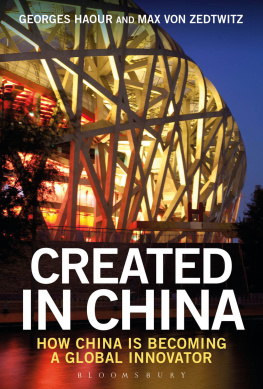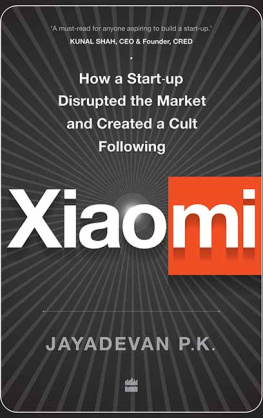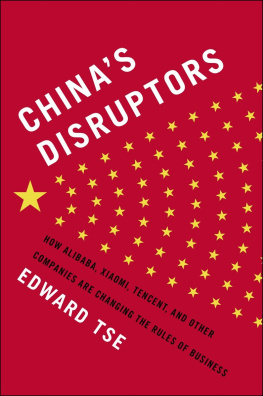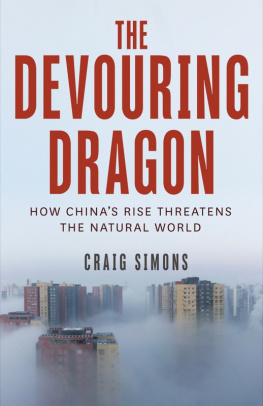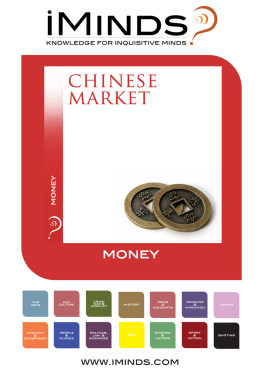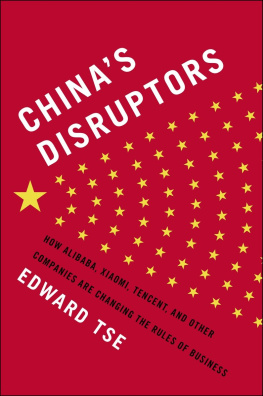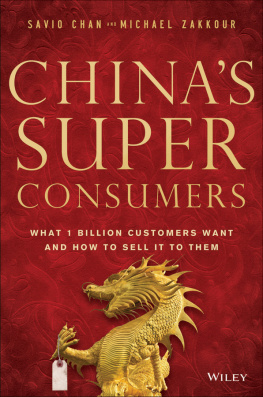


Little Rice: Smartphones, Xiaomi, and the Chinese Dream
Copyright 2015 by Clay Shirky
All rights reserved
Published by Columbia Global Reports
91 Claremont Avenue, Suite 515, New York, NY 10027
http://globalreports.columbia.edu/
facebook.com/columbiaglobalreports
@columbiaGR
Library of Congress Control Number: 2015946812
ISBN: 978-0-9909763-3-2
Book design by Strick&Williams
Map design by Jeffrey L. Ward
Author photograph credit: Barbara Alper
CONTENTS
A couple of years ago, while I was doing some work at NYUs Shanghai campus, I got lost on the subway. As a New Yorker, it takes a lot to make me feel like a country mouse, but at triple the population of my hometown, Shanghai does it. Even though the Shanghai subway system is amazingly well-provisioned with directions in English, I got out at the wrong stop. I didnt figure this out right away, because the subway exited into a mall, just like at my stop, and Shanghai has so many malls36 million square feet of retail space will be built this yearit can be hard to tell one from another.
Walking in a daze through a vast collection of hallways and shops, I did the very thing people who build confusing malls wanted me to do: I slowed down and started looking around, whereupon I noticed a booth selling mobile phones, a thing I happened to need at the time. I saw a particularly nice one, all black, rounded sides, quite stylish, whose logo read Mi3. I decided that a Mi3 would be as good a phone as any, so the vendor and I did that curious pointing and gesturing thing people do when transacting with no common language except money, and ten minutes later, I had my phone.
There is not much a middle-aged guy can do to seem au courant to eighteen-year-olds, but that phone did it. For the next several days on campus, whenever I needed to do anything on my phone, one of the Chinese students would ask, Where did you get that? Not, What kind of phone is that?they all recognized it. The Mi3 was a huge hit for Xiaomi, the startup that made it, selling faster than the company could produce them. I had managed to get my hands on a phone so popular, the company couldnt always keep up with demand, making me briefly the envy of teenagers (not a familiar feeling, before or since).
Xiaomi (pronounced like the show- in shower, plus me) is the thing that many people in the West dont think exists: a company that can create products that arent only made in China, but designed in China, and beautifully so. For decades, the rap on Chinese manufacturing has been, Oh sure, they can make lots of copies cheaply, but they cant design new products. Over the forty years that China has been open for business, the countrys manufacturers have mastered increasingly complex sourcing and assembly for increasingly complex products, especially electronics. (The iPhone box may say Designed in California, but it is built in Shenzhen.)
For anyone watching this rising mastery of quality, the question has become, When will Chinese design rival its counterparts in the rest of the world? Owning a Mi3 made it clear that, at least for electronics, the answer was 2013. It was of high quality and moderately pricedmore expensive than most smartphones, but at 2000 yuan (about $330), it was cheaper than a similar Samsung, at around $400, and much cheaper than an iPhone, at over $500but those virtues are virtues of purchasing and assembly. The Mi3 is also beautiful.
All smartphones are a slab of black glass with three or four buttons on the case, so phone design tends toward rearranging these minimal elements. The Mi3s minimalism was to make a thin phone seem even thinner by making the screen look as if it ran from one edge of the phone to the other. On many of Xiaomis early phones, and most strikingly on the Mi3, the edges of the phone case curve away so sharply from the screen that the eye discounts them as part of the same surface. This was a trick, of courseyou cant make a cheap phone if the case doesnt stick out past the screenbut it was a good trick, and more importantly, it was a trick that meant that people inside Xiaomi were thinking, very carefully, about what a good phone would look like.
The mobile phone is a member of a small class of human inventions, a tool so essential it has become all but invisible, and life without it unimaginable. The common desiderata of the worlds adult population (and of most of our children), the mobile phone is the site of a steadily increasing amount of the worlds communication, from selfies to contract negotiations. Jan Chipchase, an ethnographer who has studied the use of mobile phones worldwide, points out that there are only three universally personal items that someone will carry with them no matter where they live. The first two are money and keys; the third is the mobile phone, making it the first new invention added to that short list in three thousand years.
Since launching in the late 1970s in Japan, mobile phones have become the fastest-spreading piece of consumer hardware ever, faster than automobiles or fixed-line phones or even televisions. Because individual wires do not have to be run to individual houses, and because the cost of the handset is shared with the user, mobile phones are far cheaper to deploy than fixed lines, and thus often connect populations that never had connection before. American teenagers have long insisted that they couldnt live without their phones, but this phrase has real meaning in the developing world, where the kind of information you get from a phone can have a profound effect on the quality of life: Fishermen in Kenya use phones to figure out where they can sell their catch, parents in India use it to locate doctors in other towns, and so on. Mobile phones may be a big improvement over fixed phones, but they are a gigantic improvement over no phones at all.
This dramatic change in what is awkwardly called teledensity is now almost universal. The number of mobile phone users crossed 4.5 billion last year, and because of dual accounts, there are now more mobile subsciptions in the world than there are people. In sub-Saharan Africa, mobile phone penetration is around 66 percent in 2014two subscriptions for every three people in a region where the phone network extends much further than the electrical grid, leaving it to small-business people to sell phone-charging services using car batteries. Penetration for the worlds heavily indebted poor countriesHIPC to the United Nations, the poorest of the poor to you and meis only just behind at 58 percent, or three mobile subscriptions for every five people, in countries with barely functioning economies. Meanwhile the countries with the lowest penetration are there not because of lousy economics, but repressive politics. North Korea, Myanmar, Eritrea, and Cuba are the only populous countries with less than 25 percent adoption. Absent direct repression by the state, the citizens of the world are adopting mobile phones at a torrid pace.
All these phones have to be made someplace, and that place is China (as with most things that get made). Of all the things made in China, some are culturally specific enough to resist export; the global market for busts of Chairman Mao isnt all that much larger than the Chinese market. Others are universal; there is no country-specific version of a 5 mm screw or a Hello Kitty pencil. In between the Chinese-only products and the universal ones, though, are products that could go either way, products made in and for the Chinese market, but which might become global exports. Mobile phones straddle this divide.
Next page


